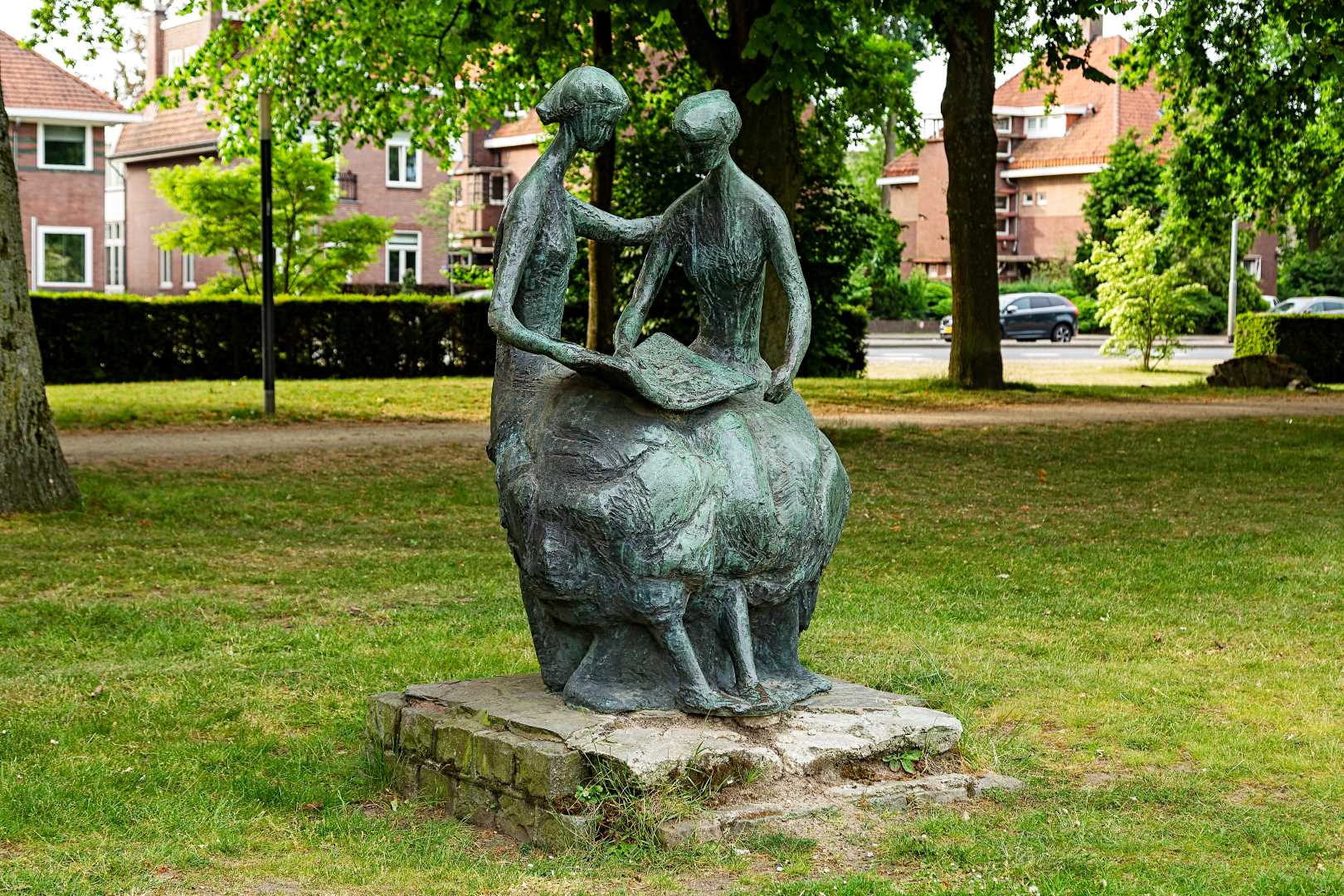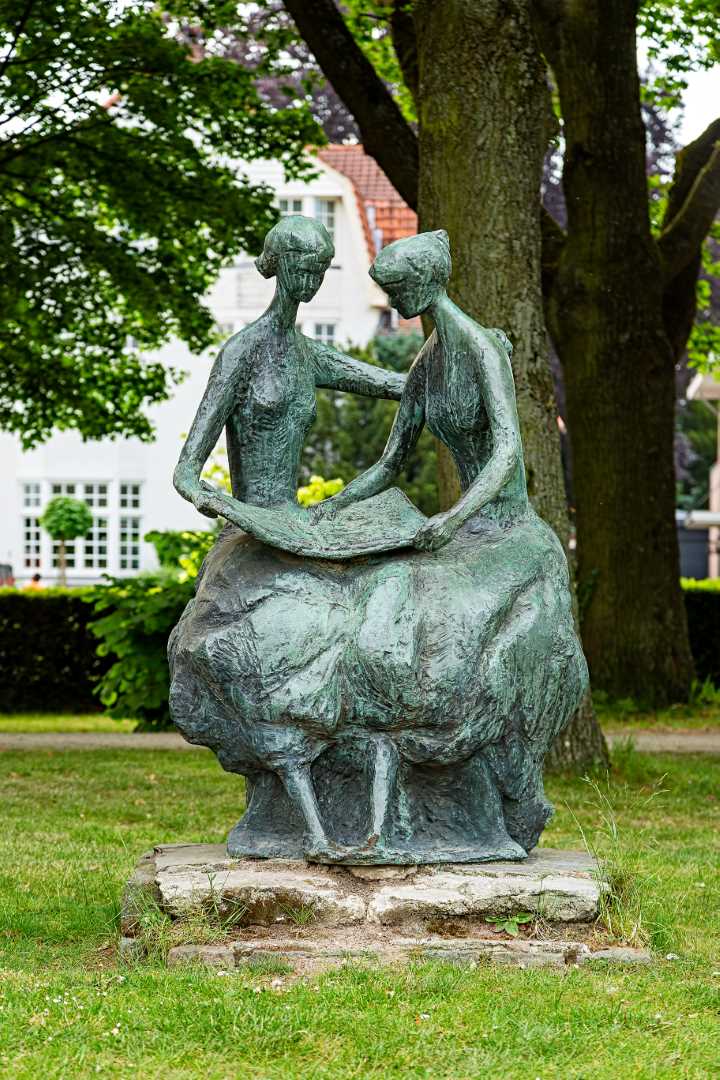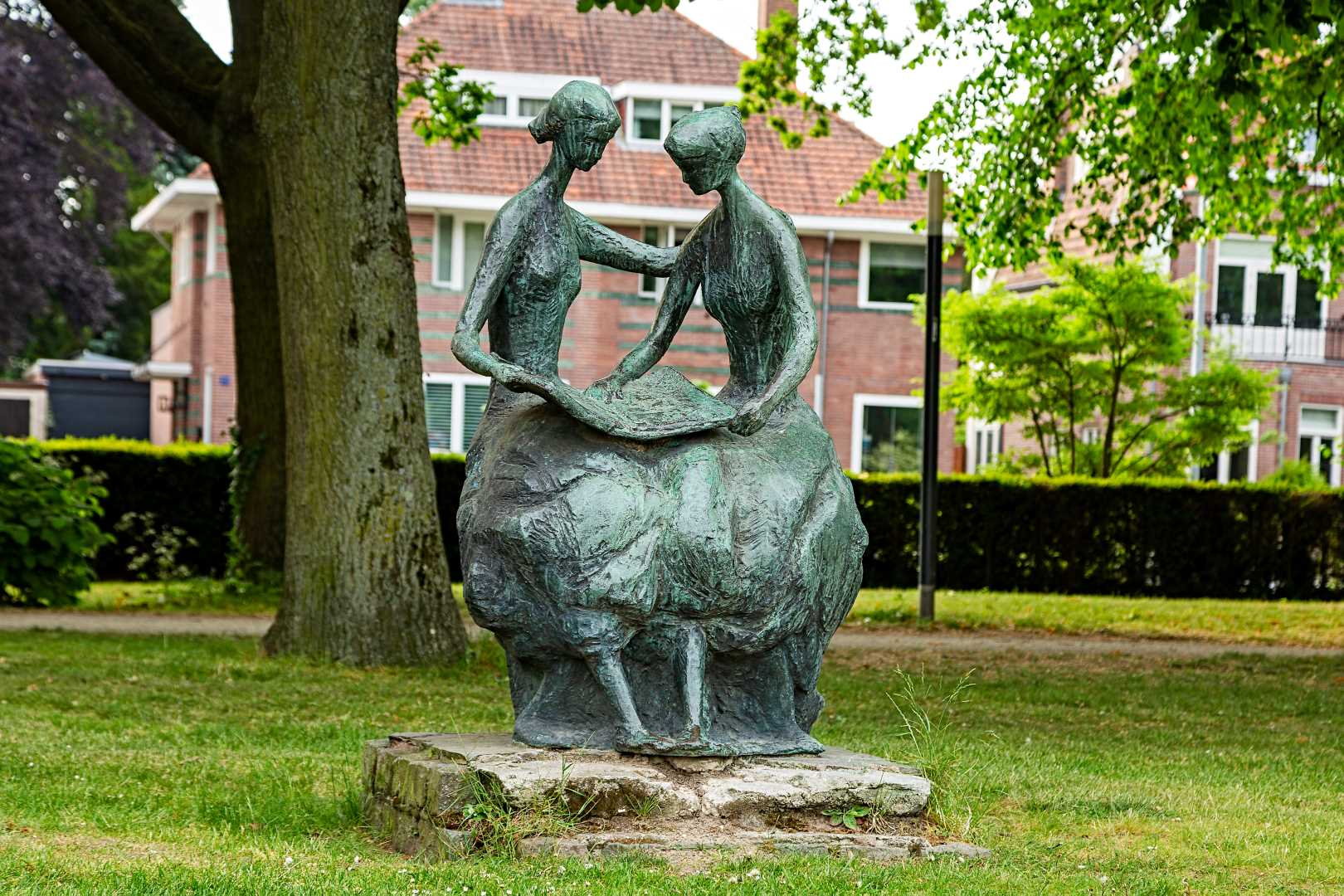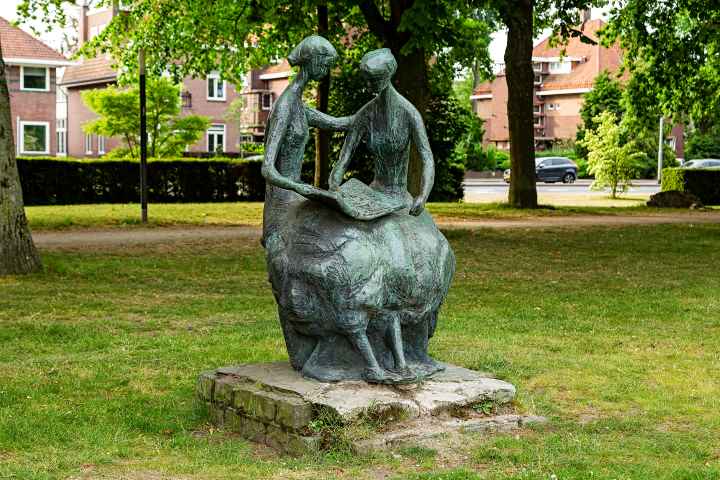Reading girls
Juliana Park
Reading girls – Willy Slegers van der Putt
The work of art Reading Girls in Venlo’s Julianapark dates from 1963. Willy Slegers van der Putt made a work with the same title a few years later, in 1969, which can be found in Boxtel. Her life work mainly consists of genre scenes and figure representations.
Reading Girls disappeared from the park in 2001 due to redevelopment. It stood for several years by the pond of the nearby Rosarium, but was eventually replaced.
The artist: Willy Slegers van der Putt
Willy Slegers van der Putt (1925 – 1997), from Eindhoven, studied sculpture after the Second World War with, among others, the sculptor Wessel Couzijn at the Rijksakademie van beeldende kunsten in Amsterdam. She also trained with the French sculptor Ossip Zadkine in his studio in Paris. Her husband Toon Slegers, from Mierlo, was also active as a sculptor. The couple lived a large part of their lives in Bergeijk in Brabant.
The Juliana Park
A group of men playing petanque, young people playing, people lazing in the shade of a tree or sitting on a bench reading a book. As soon as the weather gets good, Julianapark is a place of meeting. For example, during the festivals that take place there in the summer months, such as the culinary event Lekker Venlo, dance event Stereo Sunday and the now famous Zomerparkfeest. The spot we now know as Julianapark, adjacent to Keulsepoort, is the spot where one of the four city gates in Venlo’s fortifications once stood.
Just outside the Keulsepoort, until the nineteenth century, was a location called the Elysian Fields. From 1875, it was the location of the shunting yard of the Köln-Mindener Bahn, an international railway connection between Hamburg and Paris with a stop in Venlo. Therefore, in that period, the road west of the park was called Hamburgersingel. After the war, it was changed to Deken van Oppensingel, after Dean Jules van Oppen, who died during the war as a resistance fighter in Camp Vught.
The people of Venlo also called the road Ponywaeg. There could be two explanations for this. In line of the road there used to be the Pope factory. The young ladies who worked there were the first in Venlo to have their hair cut in a Pony style. Another explanation could be that the hussars – stationed in Venlo between 1816 and 1913 – took their horses (Ponies) out on the Hamburgersingel.
In 1971, the Van Bommel van Dam Museum opened its doors in Julianapark, nowadays located in the former post office at the Keulsepoort. Since 2000, the Limburgs Museum has also been part of the park. After the departure of van Bommel van Dam, Foodhall MOUT settled in the drastically renovated museum building in 2022.
In Julianapark there are several works of art and also some parts of the former fortress walls, of which a part has been preserved underground.




